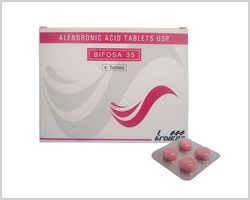Alendronate increases bone density. This article talks about the causes of Athetoid cerebral palsy and also about the side effects of Alendronate.

Causes of Athetoid cerebral palsy
What is Athetoid Cerebral Palsy?
One of the four forms of cerebral palsy is athetoid cerebral palsy (CP), also known as dyskinetic, dystonic, or choreoathetosis CP. Spastic, ataxic, and mixed are the remaining three. ADCP is one of the less common forms, occurring for about 10% to 15% of all palsy cases. Uncontrollable or involuntary muscle activities define athetoid CP. Here’s what you should understand if your child got newly diagnosed with athetoid CP.
Athetoid cerebral palsy: What Causes It?
Disruptions or deformities in fetal brain growth, especially those affecting the brain’s basal ganglia, cause ADCP. The basal ganglia are in charge of muscle coordination and movement. Problems affecting the basal ganglia while brain development can impair a person’s ability to regulate voluntary muscle movement.
The basal ganglia get damaged while the fetus is still in the womb, during a difficult birth, or soon after delivery. Problems before birth, such as maternal illnesses or genetic disorders, can cause Athetoid CP. Delivery issues or birth injuries can also cause this disorder. Mismanagement of birth-assisting devices like forceps, for instance, can harm the developing brain of the baby and cause ADCP.
Human errors, wounds, infections, or jaundice after birth can result in Athetoid CP. An automobile crash within the first 28 days after delivery, for instance, or someone throwing a newborn baby, may both cause harm to the basal ganglia. Meningitis and untreated jaundice are two infections that can harm the brain. Birth accidents, oxygen deficiency during birth, low birth weight, premature birth, and careless doctors are all factors that may raise the chance of athetoid CP.
Click here to read more about athetoid cerebral palsy.
Alendronate
Alendronate is a medication that gets prescribed to cure and reduce osteoporosis in adults. Osteoporosis causes bones to become weaker and more susceptible to breakage.
Osteoporosis is more likely to occur as you get older, after menopause. If you use corticosteroid drugs (such as prednisone) for an extended period. This drug acts by reducing bone damage. It influences aids in the maintenance of healthy bones and the prevention of broken bones (fractures). Bisphosphonates are a type of drug that includes alendronate.
Side effects of Alendronate
If you experience any of the following adverse effects when taking alendronate, contact your doctor right away.
Very common
- Stomach pain
Less common
- pain or irritation in the esophagus
- heartburn
- Difficulty in swallowing
- muscle pain
Rare side effects of Alendronate
- Skin rash
- Peeling, loosening, or blistering of the skin
- swelling or bloating of the hands, arms, face, feet, or lower legs
- muscle, joint, or bone pain, occasionally and severe incapacitating
- confusion
- chills
- chest pain
- diarrhea
- cough
- convulsions
- heartburn
- difficulty with moving
- difficulty with breathing
- irregular heartbeats
- welts or hives
- heavy jaw feeling
- swelling on the lips, eyelids, face, hands, throat, tongue, sex organs, feet, or legs
- joint pain
- itching
- muscle cramps in the arms, hands, legs, feet, or face
- muscle cramping or aching
- loose tooth
- swelling, pain, or numbness in the jaw or mouth
- pain or burning in the throat
- tingling and numbness around the fingertips, mouth, or feet
- irritated, red eyes
- rapid weight gain
- white spots, ulcers, or sores on the tongue or lips or in the mouth
- sore throat
- redness of the skin
- tingling of the feet or hands
- swollen joints
- stomach cramps
- unusual weakness or tiredness
- trouble breathing
- tremor
- vomiting
- unusual weight loss or gain
Side effects of Alendronate that do not necessitate immediate treatment
If any of the below side effects persist or become bothersome, or if you have any concerns about them, consult your doctor
- bloated or full feeling
- Constipation
- diarrhea
- nausea
- headache
- gas
- eye pain
- lightheadedness or dizziness
- impact on vision
- thinning of the hair
- sensitivity to light
- sensation of spinning
- tearing
Summary
Athetoid cerebral palsy is one of the four forms of cerebral palsies. Athetoid CP occurs for about 10 percent to 15 percent of all palsy cases. Birth accidents, oxygen deficiency during birth, low birth weight, premature birth, and careless doctors are all responsible factors.
